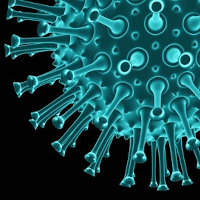— from Emergency Operations Center, Camp Murray —

Newest numbers. For the most recent tally of cases by county, demographics, and more, visit the Department of Health’s dashboard and the state’s COVID-19 risk assessment dashboard.
Eleven cases of rare but serious COVID-19 related condition in children. DOH announced 11 total cases of Multisystem Inflammatory Syndrome in Children (MIS-C) associated with COVID-19 in Washington state. MIS-C is a rare but serious condition first identified by health care providers in the United Kingdom in late April.
The CDC says “MIS-C is a condition where different body parts can become inflamed, including the heart, lungs, kidneys, brain, skin, eyes, or gastrointestinal organs. Children with MIS-C may have a fever and various symptoms, including abdominal (gut) pain, vomiting, diarrhea, neck pain, rash, bloodshot eyes, or feeling extra tired.”
In Washington, six MIS-C cases are nine years old or younger, and five are 10 or older. 40 states have reported a total of 570 cases.
Read the DOH release here.
This week’s statewide report shows mixed trends in COVID-19 activity, positive impacts of face coverings and distancing. DOH today released the newest statewide situation report which reflects varying COVID-19 trends in different regions and age groups.
Key findings include:
- Transmission is likely still increasing in western Washington as of mid-July. The best estimate of the reproductive number (the estimated number of new people each COVID-19 patient will infect) for that region remains above one, meaning the number of people getting COVID-19 is increasing. The goal is a reproductive number well below one, which would mean the number of people getting COVID-19 is declining.
- Transmission is slowing overall in eastern Washington. This report is the first time the reproductive number for eastern Washington has been confidently estimated below one. Maintaining or intensifying current levels of reduced activity, social distancing and mask use will be critical to keeping the reproductive number below one.
- Cases are again increasing in people age 40 to 69 and over 70, both in eastern and western Washington. The risk of hospitalization and death is significantly higher for these age groups.
- Overall rises in the Puget Sound area, particularly Pierce County, point to increasing transmission there. In eastern Washington, encouraging declines in Yakima, Benton and Franklin counties are offset by rises in Okanogan, Chelan and Douglas counties.
You can read DOH’s release here.
In case you missed it: school reopening framework and Safe Start for Long-Term Care facilities announced this week. Gov. Jay Inslee rolled out two major announcements this week – a Decision Tree framework to help school districts determine if or how to provide in-person learning for the upcoming school year, and a plan that would allow some visitation at long-term care facilities that are able to meet certain guidelines.
In both cases, the governor and health officials emphasized that the ability to resume these crucial in-person activities depends on communities containing the spread of COVID-19. Counties with high or moderate levels of COVID-19 activity must limit in-person interactions. Schools and long-term care facilities are not islands. Individual actions that ensure fewer, shorter and safer interactions make a difference. This means staying home as much as possible, and keeping six feet of distance and wearing a face covering when going out.
Details about the K-12 plan can be found here, and information about the Safe Start for Long-Term Care Facilities plan are available here.
**If you are reading theOrcasonian for free, thank your fellow islanders. If you would like to support theOrcasonian CLICK HERE to set your modestly-priced, voluntary subscription. Otherwise, no worries; we’re happy to share with you.**








